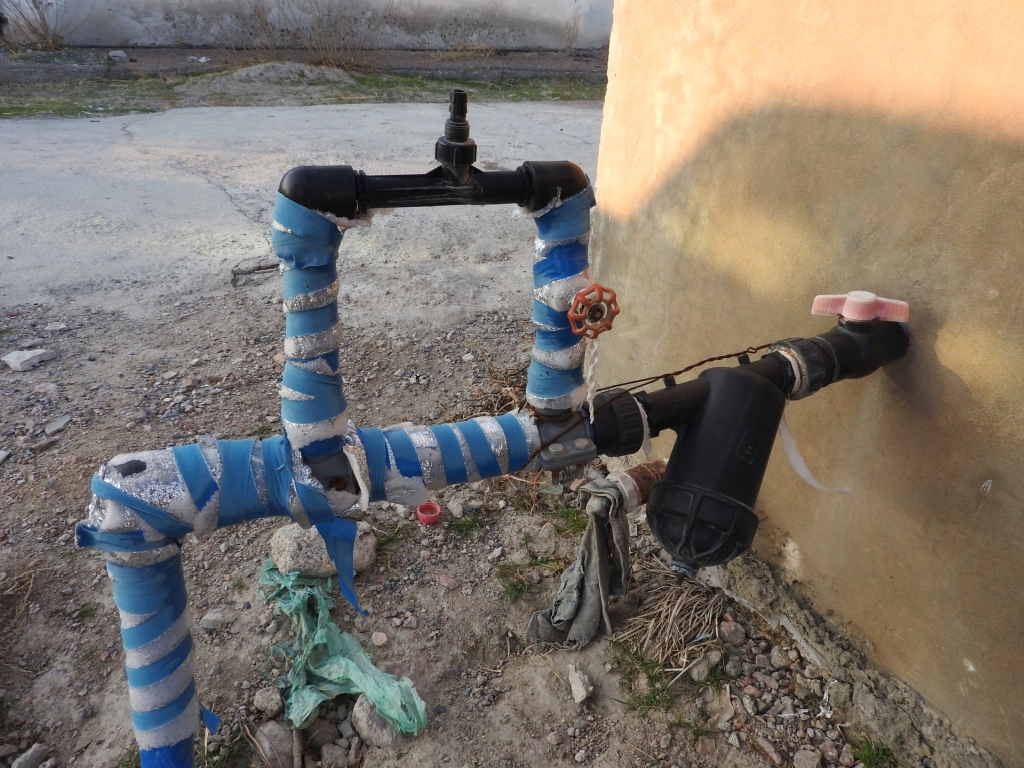

L'efficacité de l'irrigation peut être améliorée en termes d'approvisionnement en eau d'irrigation, de distribution et d'utilisation sur le terrain. Des améliorations spécifiques à certains sites ont été introduites et peuvent servir de modèles. Il s'agit notamment de
1. L'approvisionnement en eau d'irrigation :
- Utilisation de l'écoulement souterrain dans les lits de rivières asséchées ;
- Utilisation de l'eau de pluie récupérée sur les toits des maisons pour les petits champs de légumes ;
- Utilisation de puits à faible débit en combinaison avec un château d'eau et un réservoir pour permettre l'irrigation au goutte-à-goutte de petits vergers et de champs de melons.
2. Distribution de l'eau :
- Revêtement des canaux d'irrigation présentant de fortes pertes par infiltration ;
- Amélioration des structures de dérivation de l'eau pour l'allocation de quantités optimales d'eau.
3. Irrigation efficace des cultures :
- Irrigation au goutte-à-goutte de diverses cultures, par exemple oignons, pommes de terre, maïs, melons, pommes ;
- Irrigation par aspersion de la pomme de terre.
Les principaux facteurs favorables sont la collaboration entre les différents acteurs - départements de gestion de l'eau et départements agricoles au niveau du district, administrations villageoises, services de vulgarisation, communautés et agriculteurs.
L'irrigation au goutte-à-goutte et l'irrigation par aspersion ont été testées avec succès pour diverses cultures, mais la viabilité économique de ces technologies d'irrigation efficaces varie. L'irrigation au goutte-à-goutte n'est économiquement viable que lorsque l'équipement d'irrigation limité permet de produire des rendements élevés pour des cultures qui se vendent cher, comme les fruits et les melons. Pour les cultures de masse, comme les oignons et les pommes de terre, l'investissement requis est trop élevé par rapport aux prix obtenus pour la récolte. Toutefois, si l'eau d'irrigation se raréfie, si le matériel d'irrigation devient plus abordable et/ou si les prix des produits agricoles augmentent, cette situation pourrait changer et l'irrigation au goutte-à-goutte pourrait devenir abordable pour ces cultures également.
Aujourd'hui déjà, l'irrigation par aspersion peut être efficace lorsque l'augmentation des températures compromet la productivité et la qualité de la culture de pommes de terre.